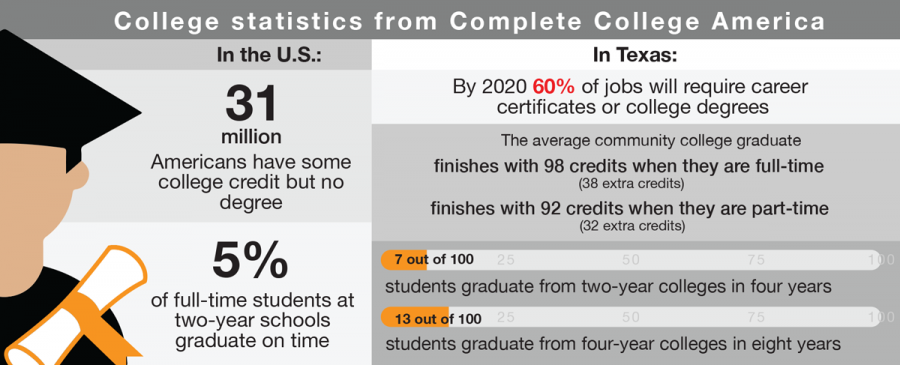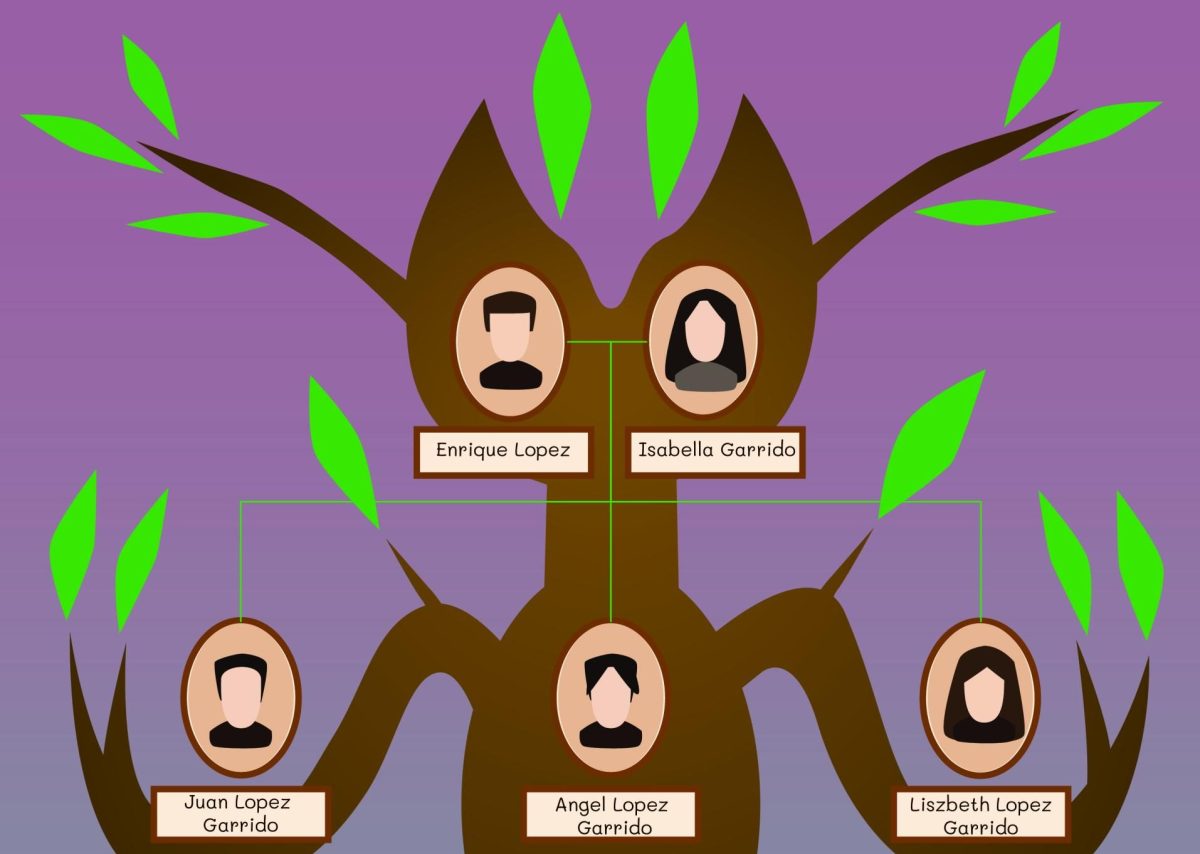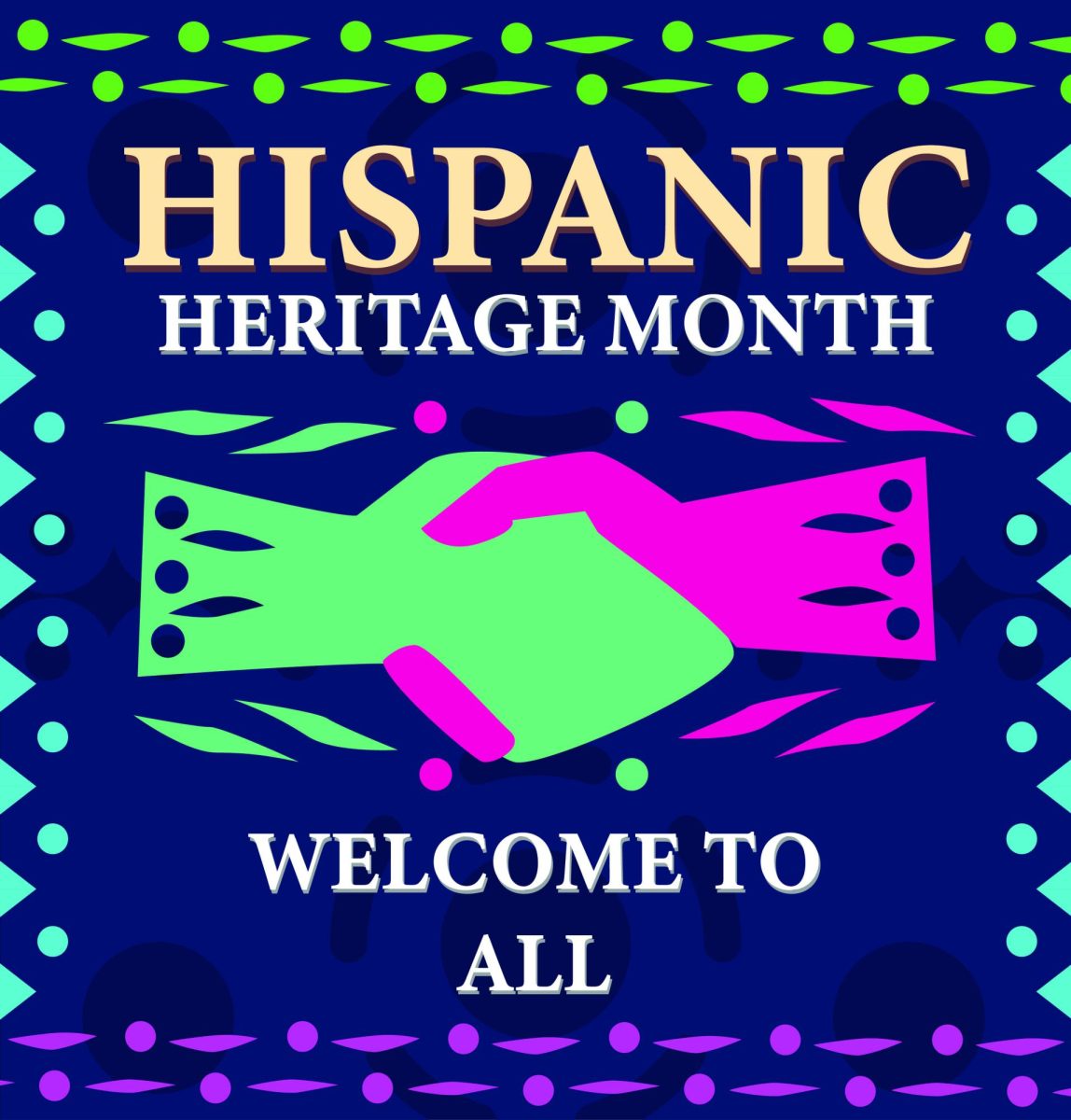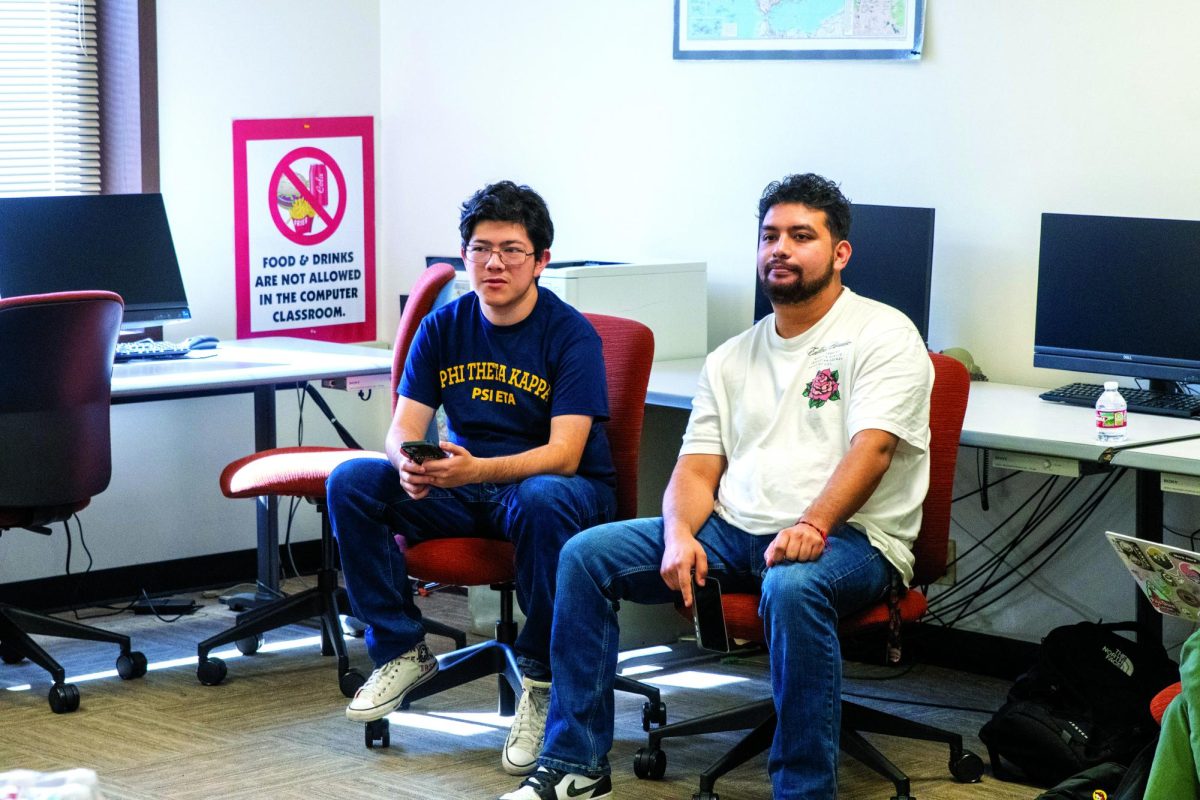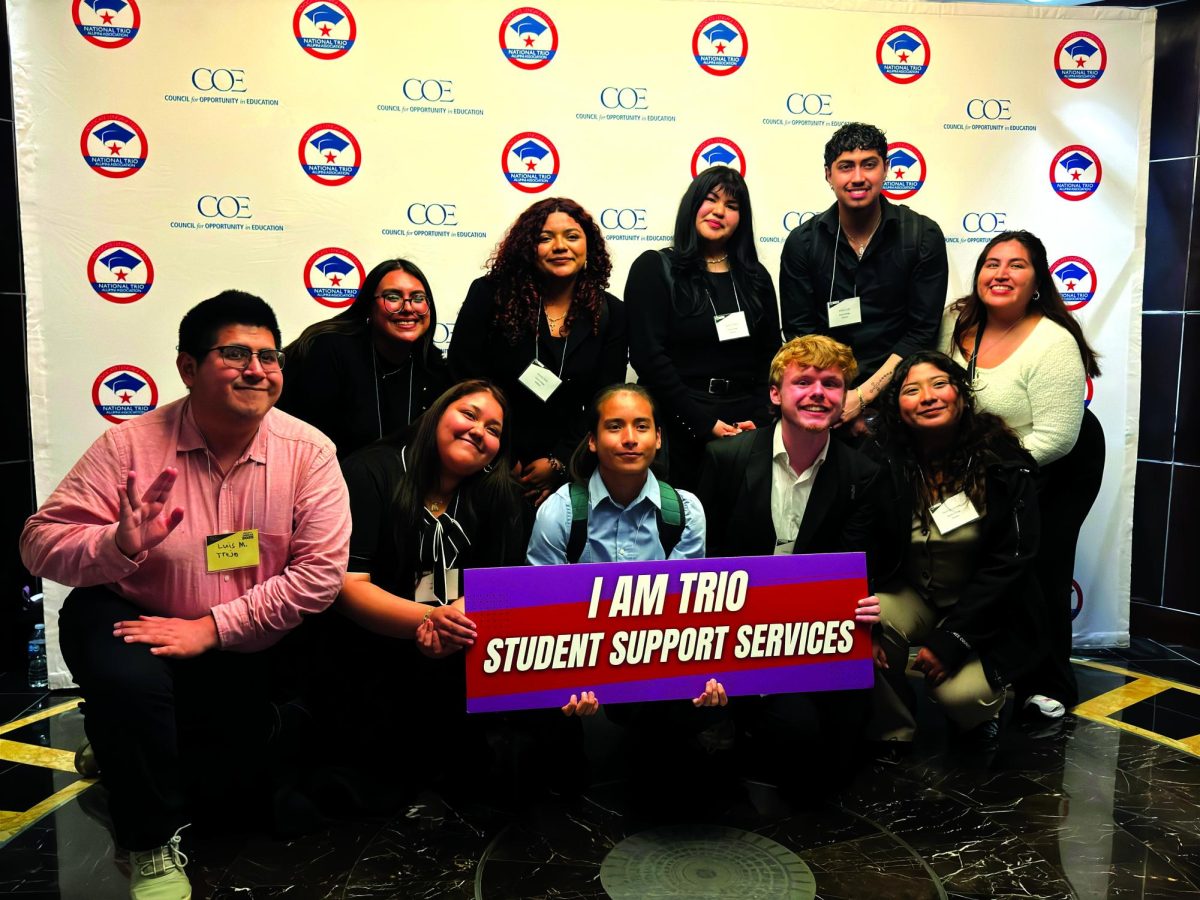
By ARIA JONES
@AriaJonesETC
Eastfield is offering students a new type of GPS to navigate their academic careers, with advisers, college navigators, 48 course maps and more on the way.
Guided Pathways for Student Success, or GPS, launched on the Dallas County Community College District website April 3, and will be providing students in the district with a more streamlined experience through advising, course mapping and milestones.
“A lot of times we hear students telling us that they’re not sure [what classes to take],” Tiffany Kirksey said, Eastfield’s director of Guided Pathways. “They don’t know what they should be doing. Perhaps they know to come to an adviser; sometimes they don’t.”
With Guided Pathways, course options are divided into seven different career paths: Arts, Communications and Humanities; Business; Education; Health Sciences; Industry, Manufacturing, and Construction; Social Sciences and Public Service; and STEM.
The initiative includes maps that show specific courses for students to take and a checklist of milestones they can achieve.
The milestones in pathways signal the times when students should be meeting with advisers, researching universities and applying for financial aid.
Kirksey said the district plans to have at least 100 more pathways available by fall. All career paths should be mapped out by the 2019-2020 school year. Guided Pathways is designed so that students first meet with an adviser and a career coach to plan the specific route they need to achieve their goals.
The career paths also show how students can stack certificates while earning certain degrees.
Eastfield has high schoolers earning dual credit, students earning a certificate or degree while others are transferring to a four-year university or taking a combination of those paths.
There are more than 300 programs of study to choose from on econnect.
One student explained what it was like to choose a career path when she entered college.
“I was in high school when I started, and it was very different for me because we got specific advisers,” business major Sarah Frichette said. “They sat us down and showed us this confusing document that was our program of study. At 16 I was looking at it really confused. It took about a year to figure it out…but the advisers were pretty helpful.”
[READ MORE: Millennial political participation increasing]
Frichette, who is an OSER student engagement assistant, said the No. 1 question she gets from students when helping with registration is about the program of study.
Even she has taken a course she didn’t know would not count toward her academic goals.
“I wasn’t sure what would count towards my degree, what would help,” she said. “I took swimming as one of my electives.
I could’ve taken personal finance, but I chose not to. I didn’t know.”
Frichette is graduating in May, but she said she’s now having to take a Maymester to make up for the mistake because she needs an elective to transfer to a university.
Kirksey said the district conducted focus groups with students in different DCCCD programs.
She said the feedback has been greatly incorporated into the design of the Guided Pathways and the pathways were created to address the common experience that students have of deciding what kind of education they want.
As Guided Pathways continues to develop, Kirksey said receiving feedback from the college community is important. She said she has reached out to student organizations and is always looking for new ways to receive feedback from students.
The maps are only a piece of the Guided Pathways initiative.
Kirksey said the DCCCD has increased its advising staff by 25 percent and career services staff by 35 percent, in addition to adding a new position, called a college navigator, to also assist students.
“We are putting a lot of focus in making sure that we have people in place to really partner with our students and to connect to students,” Kirksey said.
On the DCCCD website, links to the different career categories list specific careers and their pay.
The website is also where maps and advisors for each category can be found by students.
“The maps are really going to give some structure to help limit some of the challenges,” Kirksey said, “like not knowing what classes to take, taking courses that don’t apply to your program, or taking more classes than you really need to graduate.”
[READ MORE: Chancellor vows to improve graduation rates]
The new maps don’t change the core curriculum, eliminate the electives options, or take away a student’s right to choose courses, and they direct students to advisers if there are multiple elective options for a category in their program of study.
“It’s much easier on the eyes,” business major Collin Reese said. “It breaks it down a lot better than the six pages long [program of study].”
The maps are only one page and only include the recommended courses for a career path.
Course descriptions remain online for students to explore their options.
After looking at the maps, Reese said they would be a nice addition to what he’s been using the last two semesters.
“I like that it’s recommended,” he said. “It could show options; you know, how you can substitute electives, things of that nature.”
With pathways narrowing down what students need to reach their career goals, faculty members worry that students may not be exposed to courses outside of their category of choice.
“The intent is excellent. I can see why, given what we know about retention and graduation rates,” sociology professor India Stewart said. “There could be an argument made, if we streamline things so much, that people don’t actually get an opportunity to discover what they might be interested in. [They’re] not exposed to a liberal arts education.”
She said a program centered on getting students into the workforce quickly is different than one centered around education.
“Are we going train people to just take jobs — which is good because you need to eat, and I need to eat — or are we going to educate them to think a bit more broadly about the world around them?” Stewart asked. “To be able to think critically, evaluate evidence, look at things that are conflicting.”
Stewart said one good part of the new pathways is the increased advising. She added that there is a difference between students taking extra courses because they were not advised very well and students taking extra courses to become well rounded.
“We definitely want to encourage students to still engage with their academic advisers, to continue to talk to their faculty, and to continue to take courses that will meet what their personal and individual goals are,” Kirksey said.
More information about guided pathways can be found online at dcccd.edu/gps.
https://eastfieldnews.com/2018/03/07/2018-primary-results-professor-wins-on-election-night-burkett-loses-state-senate-bid/


